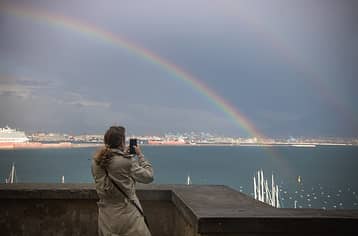- Home
- The Weather in Naples and the Best Season to Visit
The Weather in Naples and the Best Season to Visit
Tips about the weather in Naples: seasonal rain, average temperatures, and the best time of year to visit

If you are planning a trip to Naples, it’s a good idea to take a look a the city’s weather so you know what kind of temperatures to expect and to pack wet-weather gear if there is a chance of rain.
Naples and its surrounding region of Campania have a typical Mediterranean climate, with very hot and dry summers and mild but wet winters with frequent precipitation.
To follow the weather forecast while visiting, check out any app or website for the latest updates hour by hour and day by day for the current weather based on weather stations in Naples and the whole peninsula entire surrounding bay.